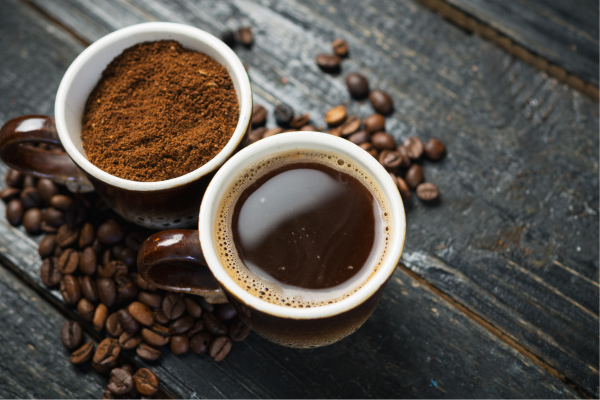If you’ve ever browsed coffee packaging or visited a café menu, you’ve likely seen the words “Arabica” and “Robusta.” These two types of coffee beans dominate the global market, but they are not created equal. Understanding the difference between them is essential for any coffee enthusiast—especially beginners who are trying to discover their personal preferences.
In this article, we’ll explore what sets Arabica and Robusta apart in terms of flavor, caffeine content, growing conditions, and how each fits into different coffee experiences.
What Are Arabica and Robusta?
Arabica (Coffea arabica) and Robusta (Coffea canephora) are the two most commercially important species of coffee. Together, they make up more than 95% of all coffee produced worldwide.
- Arabica: Known for its smooth, nuanced flavor and lower bitterness.
- Robusta: Stronger, more bitter, and higher in caffeine.
These beans differ genetically, botanically, and even in how they grow—resulting in vastly different experiences in the cup.
Flavor Profile: Smooth vs. Strong
One of the main reasons Arabica is so popular is its superior flavor profile. It tends to have:
- A wide range of notes: floral, fruity, chocolatey, nutty
- A smooth, balanced acidity
- A light to medium body
Arabica beans often carry complex flavors that make them suitable for specialty coffee and single-origin brews.
Robusta, on the other hand, is often described as:
- Earthy, woody, or burnt
- Bitter and sharp
- Full-bodied and strong
While not as refined, Robusta’s bold taste appeals to people who enjoy a strong, punchy cup—particularly in espresso or instant coffee.
Caffeine Content: A Key Difference
Robusta contains almost double the caffeine of Arabica:
- Arabica: 1.2% to 1.5% caffeine
- Robusta: 2.2% to 2.7% caffeine
This higher caffeine level gives Robusta a natural resistance to pests and diseases, which makes it easier and cheaper to grow. It also contributes to its bitter taste and stronger “kick.”
If you’re sensitive to caffeine or prefer a smoother cup, Arabica is likely your best bet. If you want a jolt of energy or enjoy a stronger brew, Robusta could work for you.
Price and Quality
Arabica beans are generally more expensive due to several factors:
- They grow at higher altitudes, which leads to better flavor but slower production.
- The plants are more delicate and require more care.
- The harvesting process is more labor-intensive.
Robusta is cheaper and easier to produce, which is why it is commonly used in instant coffee and commercial blends. However, not all Robusta is low-quality—some high-grade Robusta beans are grown with care and used in specialty blends, especially for espresso.
Growing Conditions and Geography
Arabica grows best in cool, high-altitude climates with plenty of rainfall. It thrives in countries like:
- Colombia
- Ethiopia
- Brazil (also produces Robusta)
- Kenya
- Guatemala
Robusta is more resilient and grows well in hot, low-altitude regions. It’s commonly found in:
- Vietnam (the world’s largest Robusta producer)
- Indonesia
- Uganda
- India
Because of its hardiness, Robusta is a reliable crop in harsher conditions.
Espresso and Blending
Many espresso blends contain a mix of Arabica and Robusta. Why?
- Arabica brings flavor, acidity, and complexity.
- Robusta adds body, crema, and strength.
That rich, foamy crema on top of an espresso shot? Often thanks to Robusta beans. Blending allows roasters to balance taste, texture, and cost.
If you’re making espresso at home and love strong flavor and rich crema, consider trying a blend that includes some high-quality Robusta.
Which One Should You Choose?
Here’s a simple guide to help you decide based on your preferences:
- Go with Arabica if you…
- Prefer smooth, mild, or fruity coffee
- Are exploring specialty coffee
- Use pour-over, drip, or French press
- Are sensitive to caffeine
- Try Robusta (or blends) if you…
- Want a strong, bold taste
- Prefer espresso or moka pot coffee
- Want more crema and caffeine
- Like instant coffee’s strength
You don’t have to choose just one. Try both and see what fits your taste.
Can Robusta Taste Good?
Yes—if it’s grown, harvested, and roasted with care.
While low-quality Robusta is often bitter and flat, specialty-grade Robusta can offer surprising depth. Notes of chocolate, spice, and even nutty tones can emerge in a well-prepared Robusta shot, especially in espresso.
Still, for most beginners and daily drinkers, Arabica is usually the more enjoyable and accessible choice.
Look for Labels and Origins
When buying coffee, check the packaging for:
- 100% Arabica: Usually a sign of quality and complexity
- Arabica/Robusta Blend: Often found in espresso blends
- Origin and Roast Date: Freshness and source matter
- Tasting Notes: Give you an idea of what to expect
Some brands also list the Robusta percentage in blends, especially if it’s meant to add strength.
Final Thoughts: Know Your Bean, Enjoy Your Brew
Understanding the difference between Arabica and Robusta empowers you to make better coffee choices. Whether you seek delicate flavors or a bold morning punch, the right bean can make all the difference.
Start by exploring 100% Arabica if you’re new to coffee, then try blends or pure Robusta to see how it compares. The world of coffee is big, bold, and full of flavor—your journey is just beginning.

